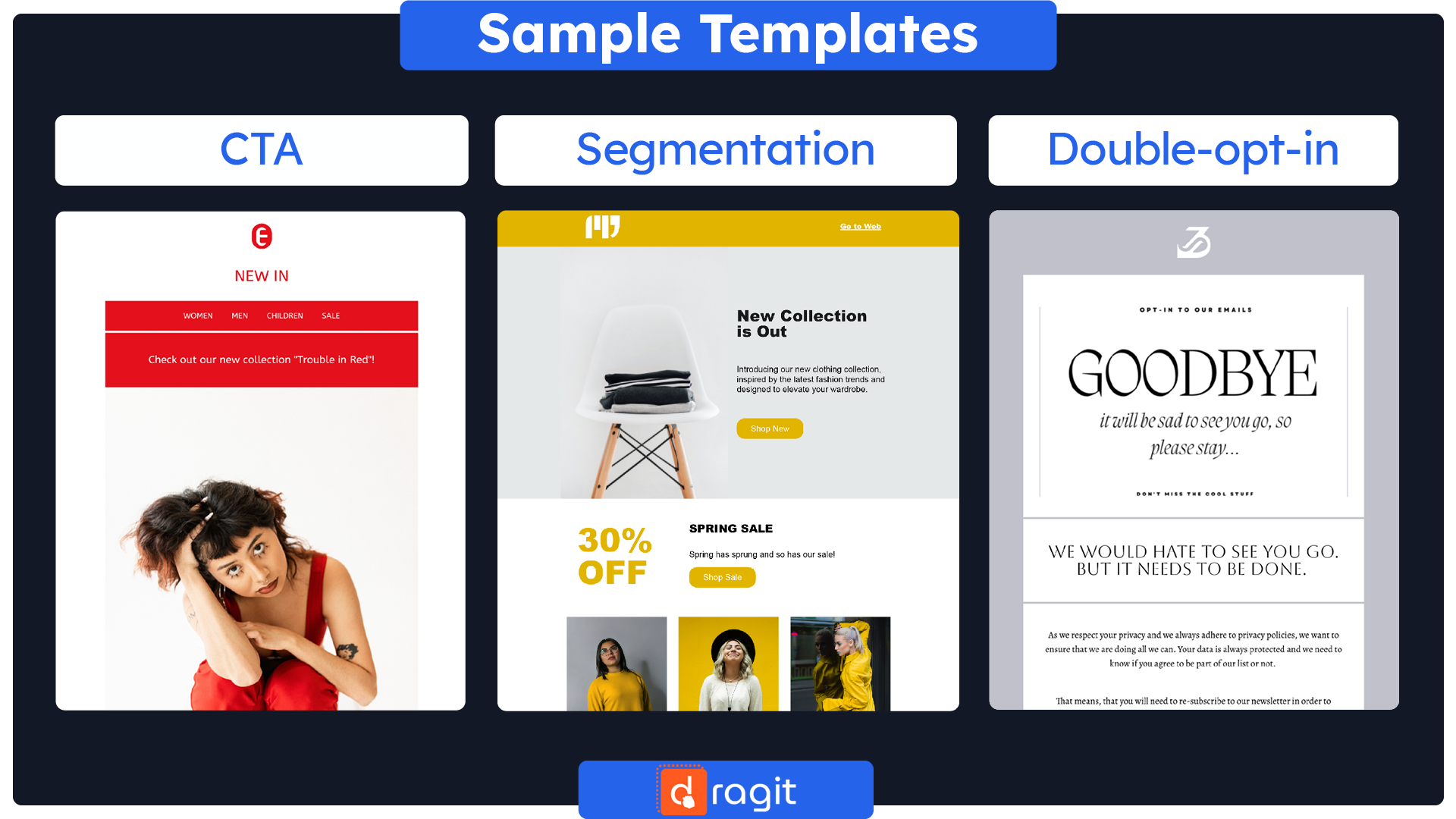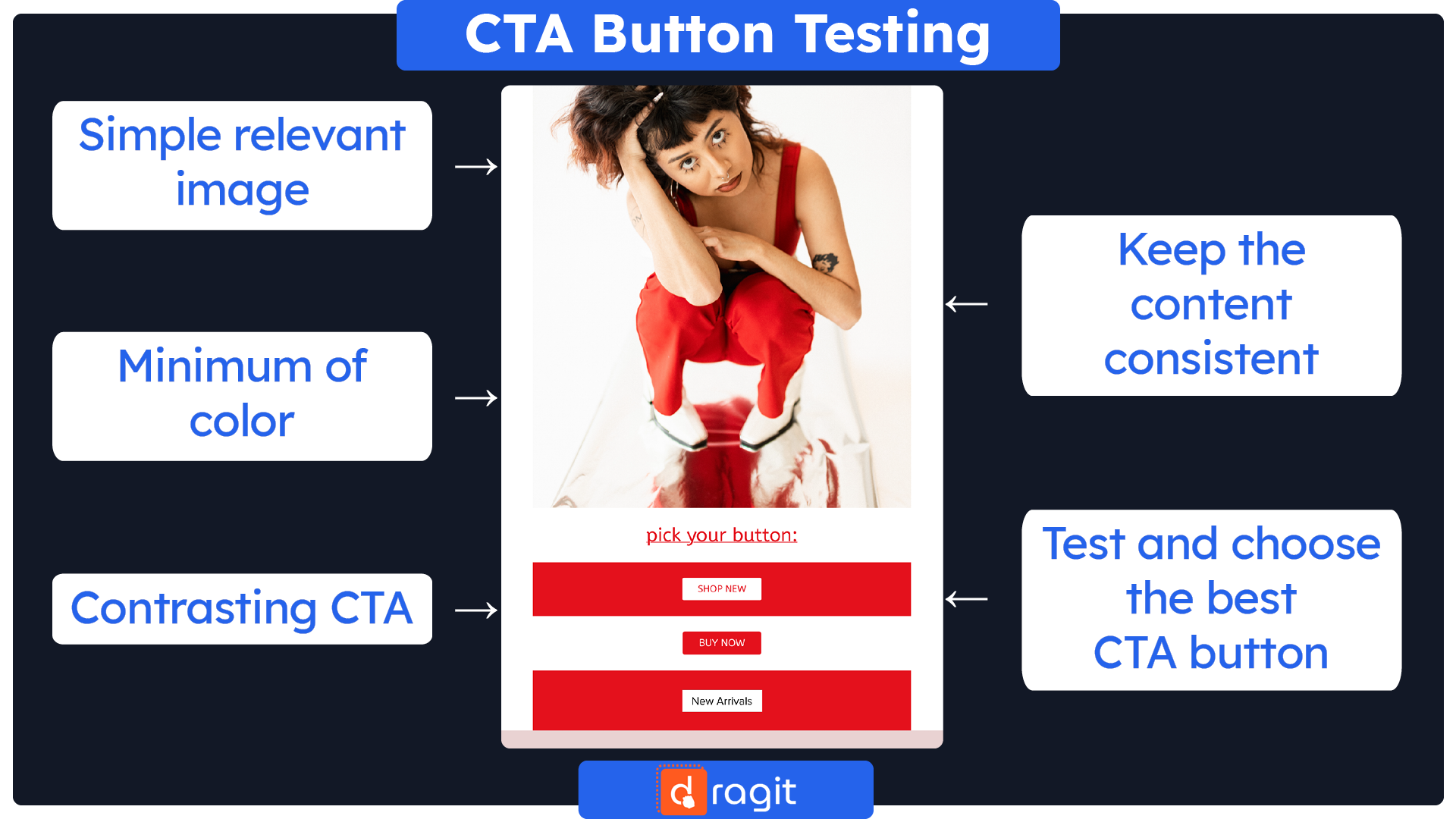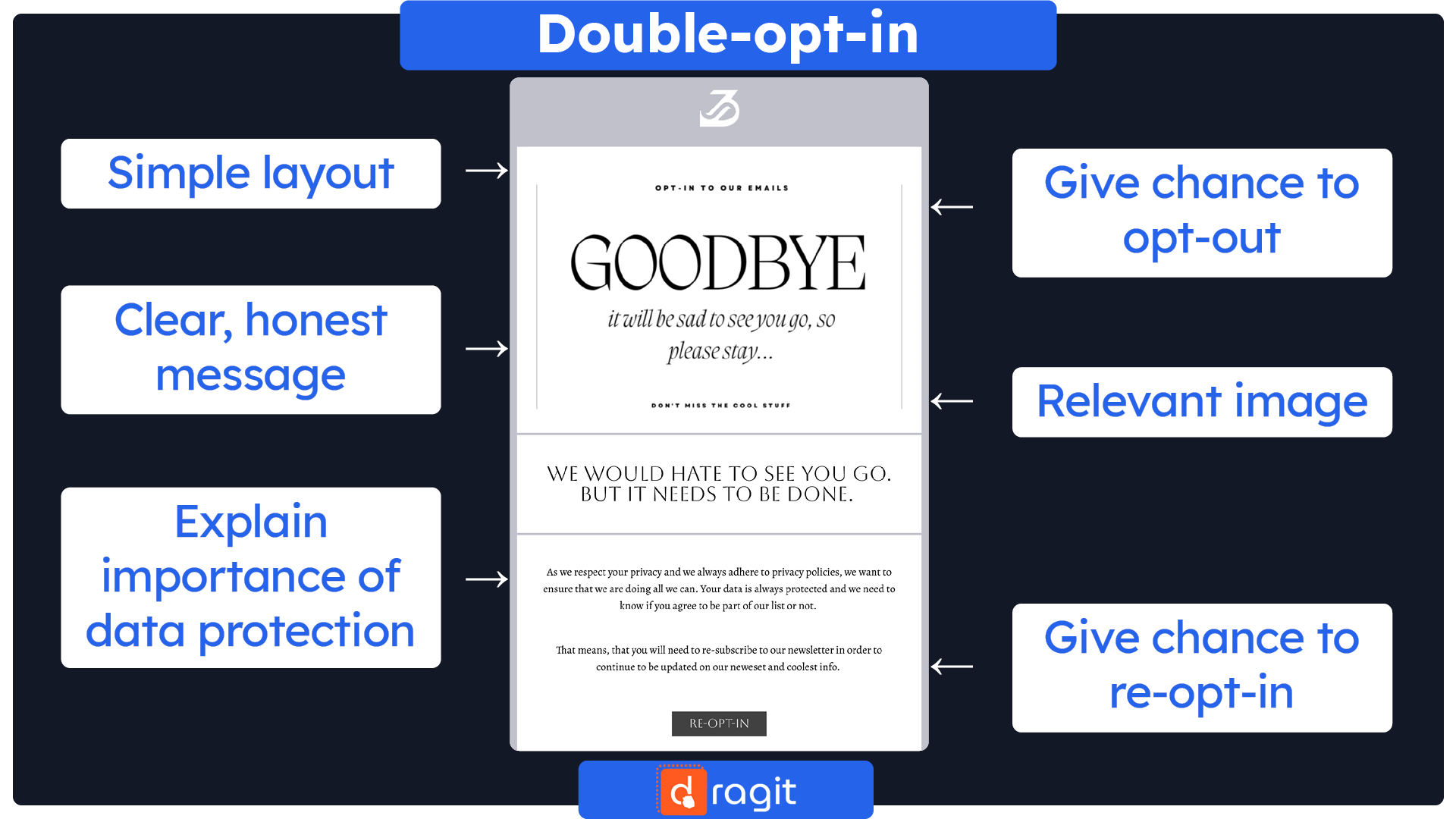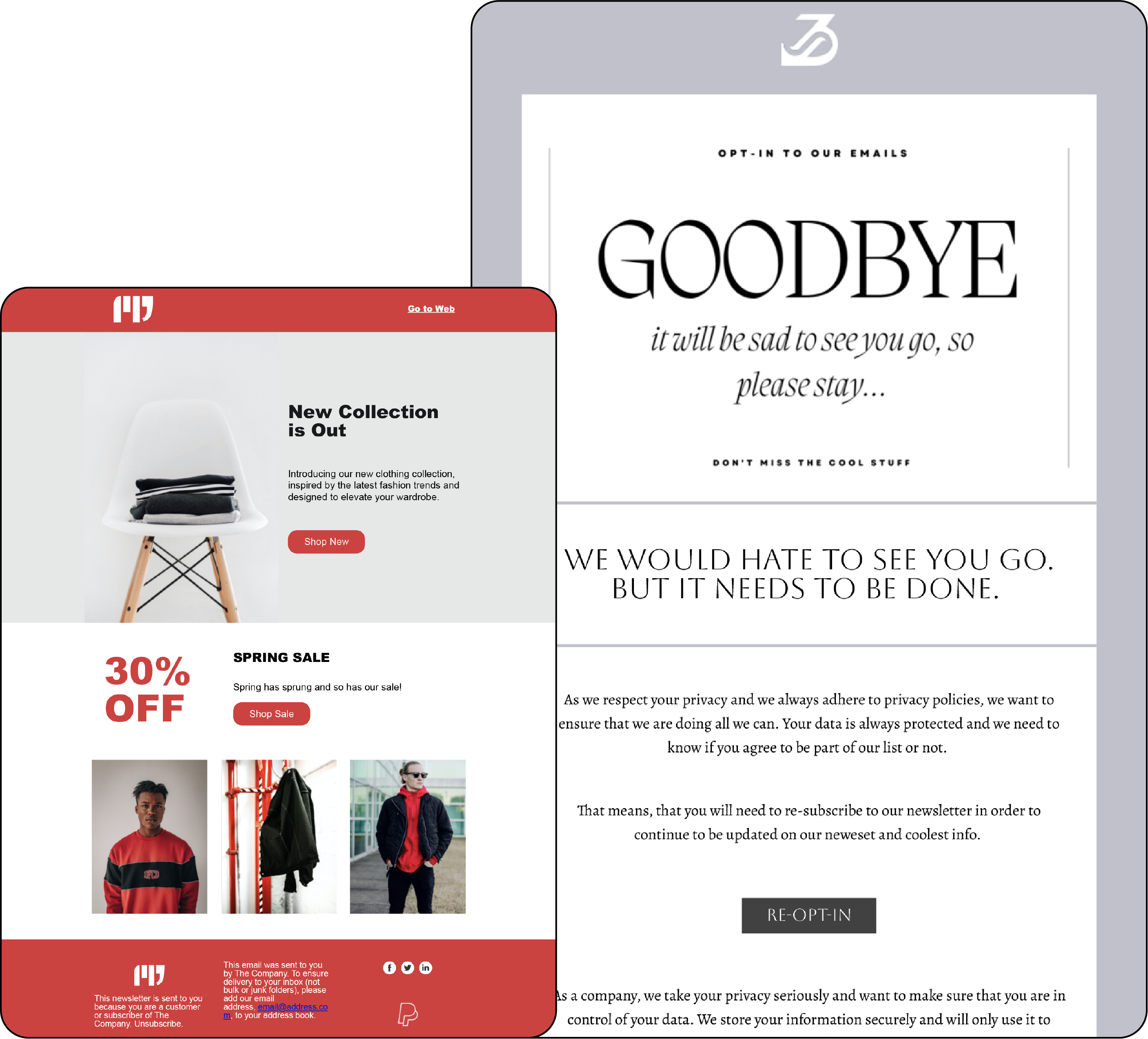Email marketing is one of the most effective ways to reach your audience and drive conversions. But how do you know if your email designs are hitting the mark? The key is to measure their success. In this article, we'll explore the key metrics to track when measuring the success of your email designs and provide tips for improving your designs based on the insights you gather. By analyzing your email metrics, you can gain insights into what's working and what's not and make data-driven decisions to optimize your email designs for better results. So grab your coffee, and let's dive into the world of email metrics!
Defining Success Metrics
Before you can measure the success of your email designs, you need to define what success means to you. Depending on your goals and objectives, success metrics can vary. Here are some standard metrics to consider when measuring the success of your email designs:
- Open rates: The percentage of recipients who opened your email.
- Click-through rates (CTR): The percentage of recipients who clicked on a link within your email.
- Conversion rates: The percentage of recipients who completed a desired action, such as purchasing or filling out a form.
- Bounce rates: The percentage of undeliverable emails returned to the sender.
- Unsubscribe rates: The percentage of recipients who unsubscribed from your email list.
Get This FREE CTA Email Template Here : Template
Get This FREE Segmentation Email Template Here : Template
Get This PRO* Double-opt-in Email Template Here : Template
*FREE for Dragit Pro Users.
While these are some standard metrics, success can be defined by engagement rates, revenue generated, or customer lifetime value. The key is to align your metrics with your overall business objectives and measure them consistently over time to track progress and make informed decisions. You can test everything out and get some new insights thanks to our new templates made just for you to see how your success can be measured and improved.
Understanding and defining your success metrics is crucial to accurately measure the effectiveness of your email designs. The following section will explore the first success metric: open rates. Let's dive in!
1. Open Rates
When measuring your email design's success, open rates are one of the most important metrics to consider. A high open rate means that your email design effectively grabbed your subscribers' attention and encouraged them to take action. Your available rate measures the percentage of subscribers who opened your email out of the total recipients. Here are some factors to consider when measuring open rates:
- Subject Line: Your subject line is the first thing subscribers see in their inbox, so making it compelling and relevant to your audience is essential.
- Preheader Text: This brief summary of your email content appears beneath the subject line in most email clients. Use this space to entice your subscribers to open your email by providing a sneak peek of what's inside.
- Sender Name: Use a recognizable sender name that your subscribers will trust and will be more likely to open an email.
- Timing: Consider the timing of when you send your emails. Sending emails during peak engagement times, such as weekdays or specific times, can increase the likelihood of them being opened.
By analyzing and optimizing these factors, you can increase your open rates and ultimately improve the success of your email designs. So keep reading to learn more! Next up, we'll dive into click-through rates, which can provide insight into how engaging and relevant your email content is.
2. Click-Through Rates
Once your email has been opened, the click-through rate (CTR) is the next metric to consider. This measures the percentage of recipients who clicked on a link in your email. CTR is a crucial metric as it indicates how engaged your subscribers are with your content and whether or not they find it valuable. Here are some tips for measuring and improving your CTR:
- Use clear and prominent CTAs: Your call-to-action (CTA) should be easy to find and stand out in your email. Use a contrasting color, large font, or button to make it clear to your subscribers what you want them to do next.
- Keep your content relevant and valuable: If it doesn't align with your subscribers' interests or needs, they are less likely to click through. Make sure your content is relevant, valuable, and provides a clear benefit to your subscribers.
- Segment your email list: Segmenting your email list allows you to send targeted messages to different groups of subscribers. By tailoring your content to specific segments, you can improve the relevance and value of your emails, which can lead to higher click-through rates.
- Test and optimize your emails: A/B testing can help you identify what works and doesn't. Test different CTAs, subject lines, and content to see what resonates with your subscribers and drives the most clicks.
With this knowledge, you can make informed decisions on optimizing your future email designs for even better results. But click-through rates are just one piece of the puzzle. In the next section, we'll dive into how measuring conversion rates can give you an even clearer picture of your email design's success.
3. Conversion Rates
Once your subscribers have opened your email and clicked through to your website, the ultimate goal is to get them to convert. Conversion rates measure the percentage of subscribers who complete a desired action, such as purchasing, filling out a form, or signing up for a service. Here are some key points to consider when measuring conversion rates:
- Set clear conversion goals: Before sending your email, define your conversion goals. Do you want subscribers to make a purchase, sign up for a newsletter, or attend an event? Make sure your email content and design are aligned with your conversion goals.
- Use clear and compelling calls-to-action (CTAs): A clear and persuasive CTA can make all the difference in converting subscribers into customers. Ensure your CTA stands out and clearly communicates what action you want subscribers to take.
- Optimize your landing pages: After clicking through your email, subscribers should be taken to a landing page relevant to your email content and encouraged to take the desired action. Ensure your landing page is optimized for conversions, with clear messaging, compelling visuals, and easy-to-use forms.
- Test and analyze: To calculate your conversion rate, divide the number of subscribers who completed the desired action by the total number of subscribers who clicked through to your website. For example, if 100 subscribers clicked through and 10 made a purchase, your conversion rate is 10%. Conversion rates can vary depending on audience demographics, email content, and timing. Test different email designs and strategies to see what works best for your audience, and iterate based on your results.
By measuring and improving your conversion rates, you can increase the ROI of your email marketing campaigns and drive more business for your company. But before you can measure your conversion rates, you need to ensure your emails get delivered. In the next section, we'll look at bounce rates and how to improve them.
4. Bounce Rates
Have you ever sent an email to your subscribers and noticed that many of them didn't even make it to the inbox? That's where bounce rates come into play. Bounce rates measure the percentage of emails not delivered to a recipient's inbox, either because the email address is invalid or the recipient's mailbox is full. A high bounce rate can negatively impact your email deliverability and overall email marketing performance. Here are some things to consider when measuring and improving your bounce rates:
- Soft bounces vs. hard bounces: Soft bounces are temporary delivery failures due to issues like a full mailbox or a server is down. On the other hand, hard bounces are permanent delivery failures caused by invalid email addresses. It's essential to monitor and manage both types of bounces.
- Keep your email list clean: Regularly clean your email list by removing invalid or inactive email addresses. This will help reduce your bounce rates and improve your overall email deliverability.
- Use double opt-in: Implement a process to ensure subscribers have confirmed their email addresses and are actively engaged. This can help reduce the likelihood of invalid email addresses or spam traps being added to your list.
- Monitor your email frequency and content: Sending too many emails too frequently or sending irrelevant content can increase your bounce rates. Attention your subscribers' engagement levels and adjust your email frequency and content accordingly.
Bounce rates can be a valuable metric for evaluating the health of your email list and identifying potential issues with your email content or list management. Monitoring your bounce rates and addressing any problems can improve your email marketing performance and increase your chances of success. But bounce rates are just one piece of the puzzle. In the next section, we'll dive into another critical metric for measuring the success of your email designs: engagement rates.
5. Unsubscribe Rates
As much as we all hate seeing our subscribers go, keeping track of your unsubscribe rates is essential. This metric tells you how many subscribers have opted out of receiving emails from you and can give you insights into what might be turning them off. While a high unsubscribe rate can be disheartening, it's also an opportunity to reevaluate your email strategy and make improvements to better retain your audience. Here are some things to consider when measuring your unsubscribe rates:
- Calculate unsubscribe rate: Calculate your unsubscribe rate as a percentage of your total email recipients.
- Look for patterns: Look for patterns in your unsubscribe rates, such as spikes after a specific type of email or during a particular time period.
- Offer preferences: Consider offering subscribers the option to adjust their email preferences instead of unsubscribing completely.
- Easy process: Make sure your unsubscribe process is quick and easy for subscribers to complete.
- Review content and frequency: Review your email content and frequency to ensure you're providing value to your subscribers and not overwhelming them with too many messages.
Monitoring your unsubscribe rates is crucial for maintaining a healthy email list and ensuring the success of your email campaigns. By keeping an eye on your unsubscribe rates, you can identify potential issues and take steps to address them before they escalate. But how can you know what changes to make to keep your subscribers engaged? That's where A/B testing comes in! In the next section, we'll explore the importance of testing different elements of your email designs to improve their effectiveness and keep your subscribers happy.
A/B Testing
Now that we've covered the critical metrics for measuring the success of your email designs, it's time to talk about how to improve them. If you want to take your email design game to the next level, A/B testing is your secret weapon. This powerful tool allows you to test different elements of your email design to see what works best for your audience. This involves sending two or more versions of your email to a small sample of your audience and measuring their performance to determine which version is more effective. You can improve your open rates, click-through rates, and conversion by testing different variables, such as subject lines, content, and CTAs. Here are some key things to keep in mind when conducting A/B tests:
- Test one variable at a time: To get accurate results, it's important to only test one variable at a time. For example, if you want to test the effectiveness of your CTA button, don't change anything else in your email design.
- Define your goals: Before conducting an A/B test, define what you're trying to achieve. Are you trying to increase click-through rates or conversions? This will help you decide which variable to test.
- Test a large enough sample size: To ensure your results are statistically significant, ensure you're testing a large enough sample size. This will help you avoid drawing conclusions based on a small, biased sample.
- Use an A/B testing tool: There are many A/B testing tools available that can help you automate the testing process and analyze the results. Some popular options include Mailchimp, Campaign Monitor, and Litmus.
A/B testing can help you optimize your email designs for maximum impact, so try it. And if you want to learn more about the benefits of A/B testing, check out our article "The Benefits of A/B Testing in Email Campaigns."
Summary
Well, that's a wrap! By now, you should better understand how to measure your email design's success. Remember, it's important to define success metrics and use them to track and analyze the performance of your email campaigns. From open rates to conversion rates, every metric plays a crucial role in optimizing your email marketing strategy. And remember A/B testing! This powerful tool can help you improve your email designs and boost engagement with your audience. So, hop to it and start experimenting with your email campaigns today!







